Some of London’s best places to stay are buildings that used to be something else altogether. Join us as we examine the London hotels with fascinating previous lives …
The NoMad
Not enough hotels have their own museum. The NoMad does. It’s set in what used to be the Bow Street magistrate’s court, where the likes of Oscar Wilde and Dr Crippen were committed for trial. It has skilfully reinvented itself from being a working court as late as the early 1990s – complete with grim-looking holding cells and even a drunk tank – into one of the city’s most stylish and elegant luxury hotels. Designed by the New York architects Rowan and Williams, it manages to marry Manhattan chic with British eccentricity.
The bedrooms are large, and feature a quirky mix of modern art and original Victorian features. Some even have views of the Royal Opera House, which is directly opposite. Since the NoMad opened in 2021, it’s been a destination for top-quality food and drink, too, whether you take a rhubarb margarita at the brilliant lounge bar Side Hustle, or enjoy dinner in the soaring glass atrium of the main restaurant, where chef Michael Yates marries Italian-American cuisine with British ingredients. The confit suckling pig, especially, is the stuff of dreams, and a world away from the bread and gruel that former denizens of the court would have been given.
28 Bow St, WC2E 7AW • 020 3906 1600 • info.london@thenomadhotel.com
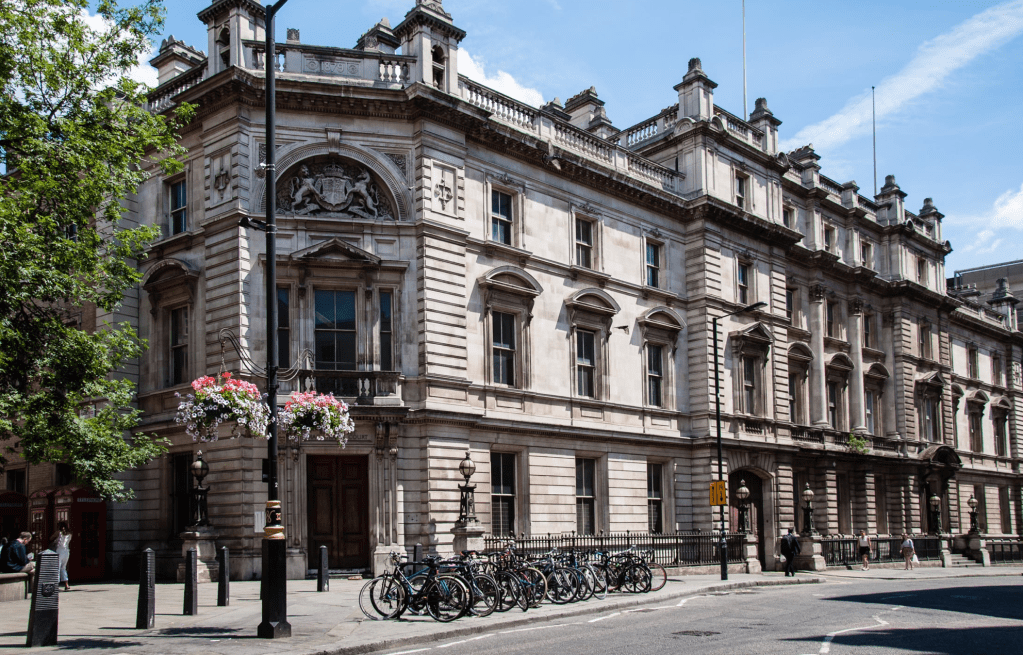
Hotel Café Royal
Oscar Wilde seems to keep popping up in London’s historic hotels, although this might be less down to coincidence and more due to the fact that the playwright, poet and wit had notoriously good taste; as he once famously quipped, ‘I have the simplest tastes. I am only satisfied with the best’. Should he return to the capital today, and make a beeline for his most renowned haunt, the Café Royal, he would be both relieved and rather surprised. Relieved, because the famous sight of the Grill Room, where Wilde wined and dined friends including his lover Lord Alfred ‘Bosie’ Douglas and the artist Aubrey Beardsley, is largely unchanged over the past 130 years. Hotel guests and well-briefed locals alike flock here for one of the city’s best afternoon teas, which boasts everything from scones and sandwiches to a fine selection of gourmet teas.
The rest of the hotel, however, is determinedly contemporary, casting off chintz and Victoriana in favour of something decidedly 21st century. The rooms are largely sleek and modern, featuring minimalist trappings (including utterly enormous marble bathrooms that are, reputedly, the city’s heaviest) and eschewing any kind of old-school trappings, although the half-bottle of champagne that greets a weary traveller is just as welcome as the glass that you will be poured upon check in.
The food and drink side of the hotel is very strong: the two-Michelin starred Alex Dilling restaurant is regarded as one of the city’s finest, and the ‘Cakes and Bubbles’ café by Albert Adrià sees visitors fight to sit outside on the terrace on pleasant summer days. For the rest of us, the in-room dining options – including a fine lamb rogan josh – are more than enough to contemplate a timelessly enjoyable stay.
10 Air Street, W1B 5AB • 020 7406 3333 • enquiries@hotelcaferoyal.com
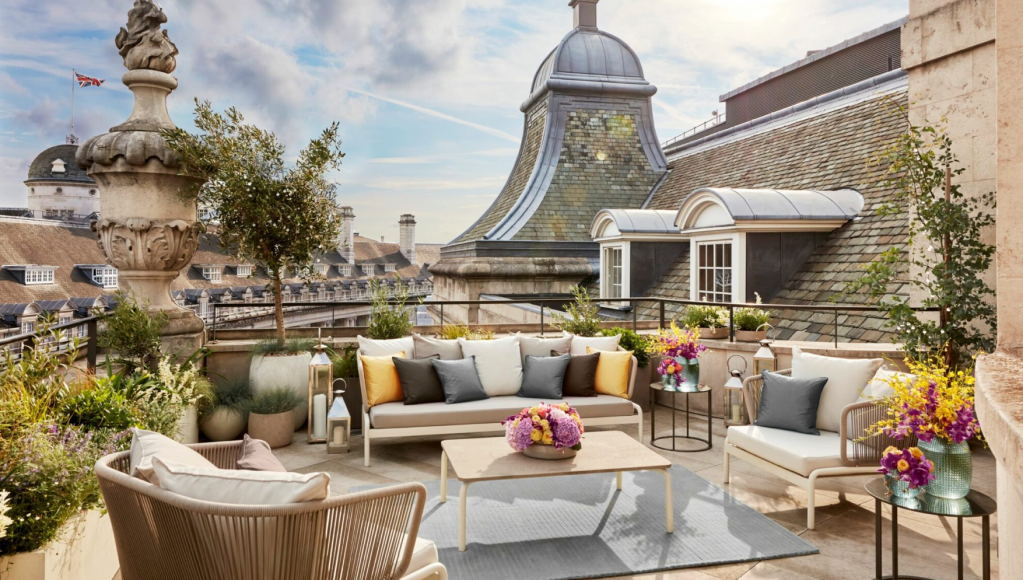
The Beaumont
Most of London’s five-star hotels are only too eager to advertise their location, but Mayfair’s The Beaumont is far more discreet. This comfortable residence – styled somewhere between 1920s New York and a mid-century London gentleman’s club – belies its origins as a local landmark called Macy’s, which served for decades as a service and parking station.
There is a pleasingly grown-up air of sophistication to everything from the free minibars (alcohol excluded, alas) as well as enough dark-hued mahogany to make Don Draper green with envy. Draper would be green in quite another regard if he visited either of the hotel’s set-piece attractions, Le Magritte bar and The Colony Grill.
The bar some of London’s best (and strongest) cocktails, with their spin on a Negroni – the superbly named The Central Story 1927 – and the Colony Grill specialises in American comfort food, done superbly; the steaks are world-class, the wines (especially a 2012 Pomerol) perfectly matched, and the conspiratorial, hushed atmosphere makes it a favourite for visiting A-list stars. A post-trial Kevin Spacey was there when we dined there, planning his comeback amidst sips of celebratory champagne. It sets a lot for the excellence of this hotel that Spacey was not – for once – the main attraction.
Brown Hart Gardens, W1K 6TF • 020 7499 1001 • info@thebeaumont.com
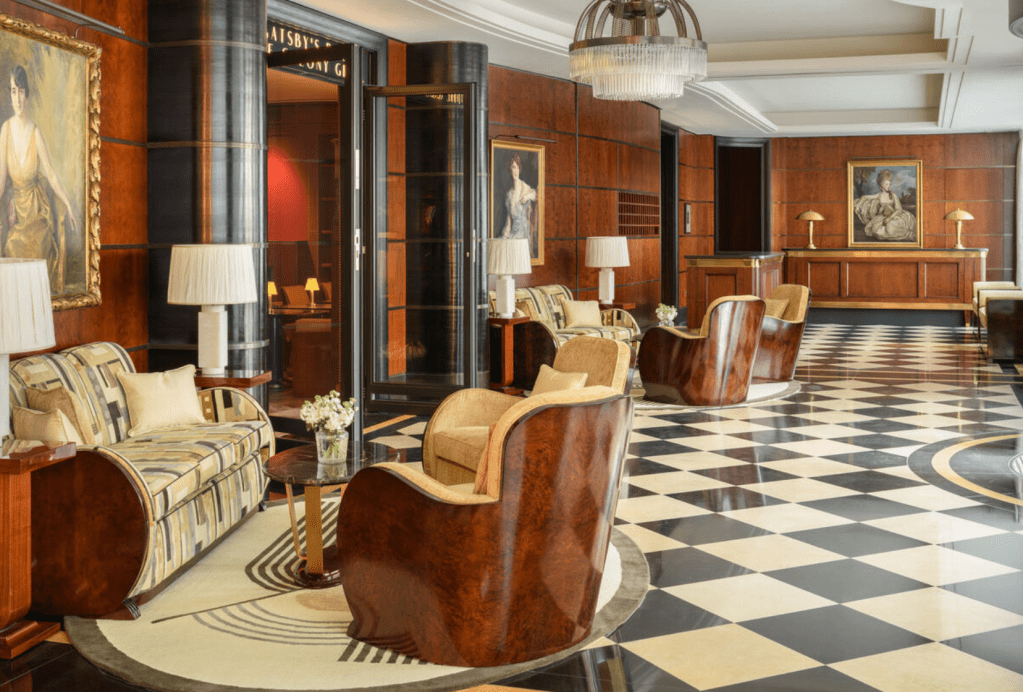
Z Hotel Shoreditch
This beautiful Victorian building was originally the Alexandra Trust Dining Rooms, opened in 1900 to provide cheap food to the poor. Funded by Sir Thomas Lipton (he of the tea), and boasting Princess Alexandra (wife of the future Edward VII) as patron, the trust created three floors of dining rooms, each holding 500 people, with the kitchens on the fourth floor. And what kitchens they were: each ‘steam-chest’ could cook a ton and a half of potatoes an hour, the six soup boilers had a total capacity of 500 gallons, and 1,200 steak puddings could be cooked simultaneously. All of which meant that the 100 waitresses served 12,000 meals a day, a feat so remarkable that American tourists stopped by just to watch.
Demand was high because the building stood near Old Street roundabout, a focal point for tram routes popular with factory workers. A full meal cost fourpence ha’penny. You bought tokens at the entrance – when Princess Alexandra herself visited, she spent hers on soup, steak pudding and plum duff, though took only one mouthful of the first two and none of the last.There were washing facilities in the basement. Alexandra was shocked to be told that the lower classes only washed after their meal rather than before.
The dining rooms closed in 1951, but the Bath stone façade still boasts the trust’s name above the red Aberdeen granite entrance. The Z chain (who show that compact hotel rooms don’t have to jettison style) moved in a few years ago, and chose to honour the building’s history by calling their restaurant the Alexandra.
136-144 City Road, EC1V 2RL • 020 3551 3702 • shoreditch@thezhotels.com
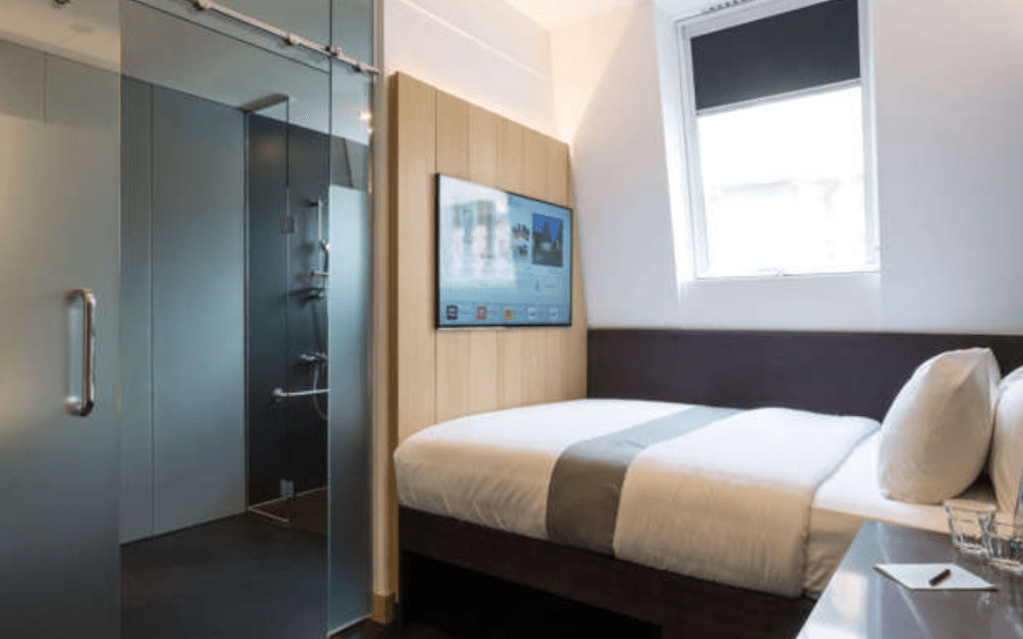
The Great Scotland Yard
Great Scotland Yard, the street linking Whitehall and Northumberland Avenue, takes its name from the fact that in 997, the English monarchy gave the land to their Scottish counterparts for use during their visits down south. The clue to the hotel’s previous use lies next door – when the gates are open during the day, you can look in and see some of the Metropolitan Police’s horses. The stables occupy the eastern section of the building – the main part has been passed from Plod to Hyatt, who commemorate the boys (and girls) in blue with memorabilia dotted around the hotel. There are vintage police helmets, truncheons and handcuffs. The bar is called The 40 Elephants, after a notorious female shoplifting gang. Based in the Elephant and Castle, they targeted West End stores and hid the booty in coats and skirts fitted with hidden pockets. They also got themselves hired as maids in wealthy households, then robbed the families. Oh, and seduced men then blackmailed them. All in a day’s work-avoidance. There’s another bar hidden behind a false bookcase – called Síbín (Gaelic for ‘illicit whisky’), it offers a choice of 35 whiskies from around the world.
In 1829 Sir Robert Peel chose Great Scotland Yard as the headquarters of the newly-founded Met. The building’s main entrance was on the parallel street (Whitehall Place), but because the public office opened onto Great Scotland Yard this became the force’s nickname. In 1873 they bought the stables opposite, and used part of the same building to house their first detective department: among the investigations carried out from here was the one into Jack the Ripper. In 1890 the Met moved to a new HQ, and in the early 20th century the building hosted the British Army Recruitment Office – it was here that Lord Kitchener gave his famous ‘your country needs you’ speech.
The hotel prides itself on being dog-friendly – so much so that your pooch can enjoy its own afternoon tea, complete with ‘dogestive biscuits’ and ‘pupcakes’.
3-5 Great Scotland Yard, London, England, United Kingdom, SW1A 2HN • 020 7925 4700 • info@greatscotlandyard.com
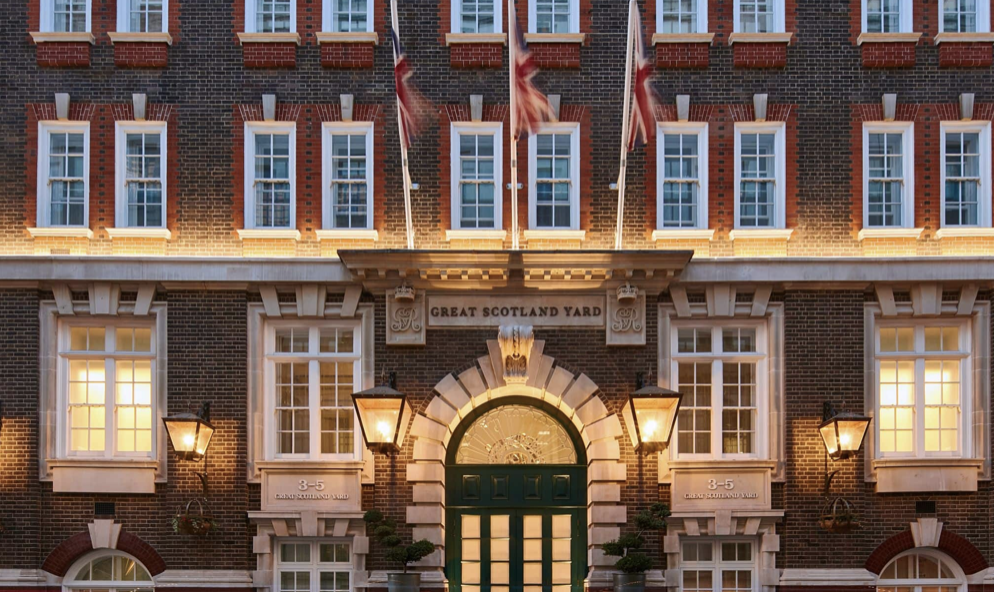
Hub by Premier Inn Shoreditch
This building just off Commercial Street might hold the record for number of previous uses – it’s been a warehouse for the Truman brewery, a World War II air raid shelter, and more latterly it housed artists’ studios, with an indoor skate park thrown in for good measure. But its original function, when built in 1888, was as a stable block for the horses of the Great Eastern Railway. It had the first elevated turntable in London, and even used specialist lifts to take the horses to upper floors.
When Premier Inn took the building over to convert it to a Hub (again, proof that ‘compact’ doesn’t have to mean ‘basic’), the building was so desperate for TLC that the mortar on every single brick had to be replaced. The company’s contract for the conversion works specified the fine should any of their actions lead to trains being delayed: £10,000 per minute. The trouble was worth it – this is the perfect place to stay if you want to be in the heart of the Spitalfields/Brick Lane area but don’t want the noise that goes with it.
Quaker Street, Shoreditch, London E1 6SN • 0330 175 9012 • https://www.premierinn.com/gb/en/hotels/england/greater-london/london/hub-london-shoreditch.html

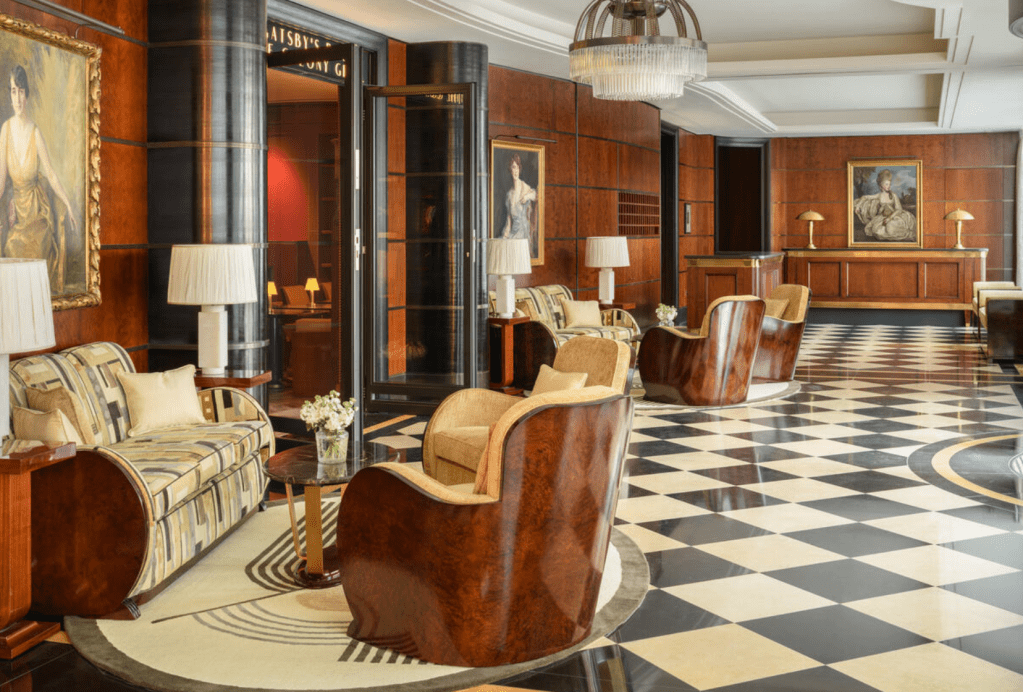




Comments